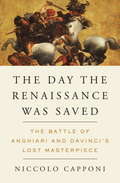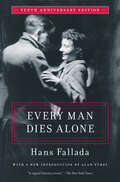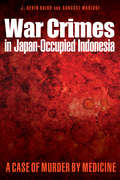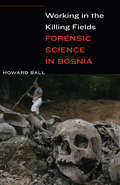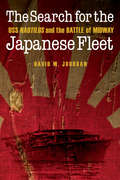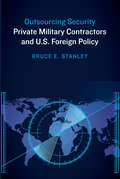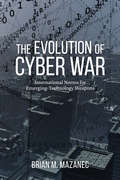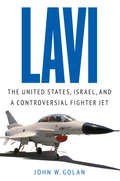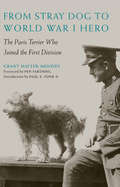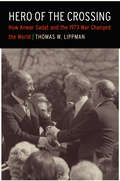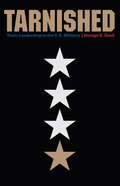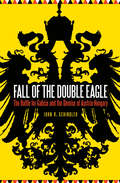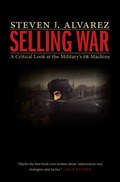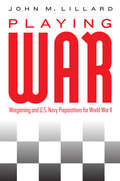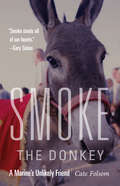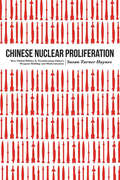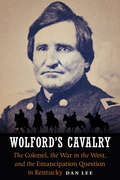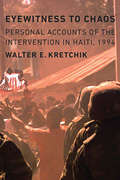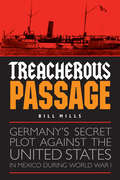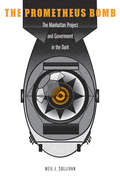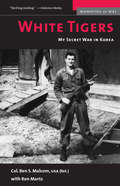- Table View
- List View
33 Days
by Austin D. Johnston Leon WerthA rare eyewitness account by an important author of fleeing the Nazis' march on Paris in 1940, featuring a never-before-published introduction by Antoine de Saint-Exupéry. In June of 1940, Leon Werth and his wife fled Paris before the advancing Nazis Army. 33 Days is his eyewitness account of that experience, one of the largest civilian dispacements in history. Encouraged to write 33 Days by his dear friend, Antoine de Saint-Exupéry, author of The Little Prince, Werth finished the manuscript while in hiding in the Jura mountains. Saint-Exupéry smuggled the manuscript out of Nazi-occupied France, wrote an introduction to the work and arranged for its publication in the United States by Brentanos. But the publication never came to pass, and Werth's manuscript would disappear for more than fifty years until the first French edition, in 1992. It has since become required reading in French schools. This, the first-ever English language translation of 33 Days, includes Saint-Exupéry's original introduction for the book, long thought to be lost. It is presented it here for the first time in any language. After more than seventy years, 33 Days appears--complete and as it was fully intended.From the Trade Paperback edition.
The Day the Renaissance Was Saved
by Niccolo Capponi Andre Naffis-SahelyIn the tradition of big-picture histories like The Swerve, a riveting account of a battle that changed the course of history--and a lost masterpiece by Leonardo da Vinci When the armies of Florence, Venice, and the Papal States clashed with the forces of the Republic of Milan on June 29, 1440, the outcome would bring the Medicis to power and lead to the Renaissance. Into this deeply researched and ground-breaking book on the little-known battle of Anghiari, Capponi weaves the story of a lost fresco that Leonardo da Vinci was commissioned to paint to commemorate the battle on the wall of the Palazzo Vecchio--directly across from his rival, Michelangelo. Da Vinci abandoned the work and it was soon painted over. Now, hundreds of years later, the Italian researcher Maurizio Seracini has proved that da Vinci's original art is still there, and he's working to uncover it. Niccolo Capponi's The Day the Renaissance Was Saved combines a thrilling narrative of battle with the mystery of a famous painting gone missing, rolling military history, art history, and political history all into one, with a heavy does of the ever-fascinating Medicis--who schemed, plotted, and funded the creation of masterpieces right alongside the author's family.From the Hardcover edition.
Every Man Dies Alone: Special 10th Anniversary Edition
by Hans FalladaThis never-before-translated masterpiece—by a heroic best-selling writer who saw his life crumble when he wouldn’t join the Nazi Party—is based on a true story.It presents a richly detailed portrait of life in Berlin under the Nazis and tells the sweeping saga of one working-class couple who decides to take a stand when their only son is killed at the front. With nothing but their grief and each other against the awesome power of the Reich, they launch a simple, clandestine resistance campaign that soon has an enraged Gestapo on their trail, and a world of terrified neighbors and cynical snitches ready to turn them in.In the end, it’s more than an edge-of-your-seat thriller, more than a moving romance, even more than literature of the highest order—it’s a deeply stirring story of two people standing up for what’s right, and for each other.
City of Sparrows
by Eva NourBased on a true story — the thoughtful, raw, and ultimately heartening tale of a young man fighting for survival in a city under siegeGrowing up in Syria in the 1990s, Sami&’s childhood was unremarkable. His day-to-day life largely sheltered him from the horrors of the authoritarian government, until he founded a successful internet company—which landed him on the regime&’s radar. Suddenly Sami finds himself in jail, then forcibly enlisted into the Syrian army during the early days of a fast-growing civil uprising. Assigned to the mapmaking division, Sami yearns to simply serve his time and go home, even as he finds himself literally charting the course of the army&’s response to the growing revolt. The situation that hits him full-force when he receives a text from his girlfriend: &“They&’re shooting at us.&” With that, Sami realizes that it is not enough to endure Assad's regime -- he has to resist. He has to return home, to the city that will become known as the "capital of the revolution." Based on true events as told to journalist Eva Nour, City of Sparrows is the story of coming of age under siege and the power of hope in the face of unfathomable loss.
Soldier of Change: From the Closet to the Forefront of the Gay Rights Movement
by George Takei Stephen Snyder-HillWhen "Don't Ask, Don't Tell," the official U. S. policy on gays serving in the military, was repealed in September 2011, soldier Stephen Snyder-Hill (then Captain Hill) was serving in Iraq. Having endured years of this policy, which passively encouraged a culture of fear and secrecy for gay soldiers, Snyder-Hill submitted a video to a Republican primary debate held two days after the repeal. In the video he asked for the Republicans' thoughts regarding the repeal and their plans, if any, to extend spousal benefits to legally married gay and lesbian soldiers. His video was booed by the audience on national television. Soldier of Change captures not only the media frenzy that followed that moment, placing Snyder-Hill at the forefront of this modern civil rights movement, but also his twenty-year journey as a gay man in the army: from self-loathing to self-acceptance to the most important battle of his life--protecting the disenfranchised. Since that time, Snyder-Hill has traveled the country with his husband, giving interviews on major news networks and speaking at universities, community centers, and pride parades, a champion of LGBT equality.
War Crimes in Japan-Occupied Indonesia: A Case of Murder by Medicine
by Mark Harrison J. Kevin Baird Sangkot MarzukiShortly after Pearl Harbor, the Japanese Imperial Army invaded the Dutch East Indies, now known as Indonesia. A deceitful campaign promoting Asian brotherhood recruited and coerced young Indonesian men to support the Japanese occupation with the sinister outcome that several million of them were worked to death or summarily killed as expendable slave laborers, or romusha, as they were called. While many romusha disappeared from the record, nine hundred were known victims of a brutal and immoral medical experiment perpetuated by an increasingly desperate Imperial Japan. In anticipation of a land assault, the Japanese needed a means to protect their troops from tetanus, and they used these nine hundred men as human guinea pigs to test an insufficiently vetted vaccine. Within days, all nine hundred suffered the protracted, agonizing death of acute tetanus. With the Allied forces poised for victory, the Japanese needed a scapegoat for this well-documented incident if they were to avoid war-crimes prosecution. They brutally tortured Achmad Mochtar, a native Indonesian and renowned scientist, along with his colleagues at the Eijkman Institute in Batavia (now Jakarta), until Mochtar signed a confession to the murders in exchange for the liberty of his fellow scientists. The Japanese beheaded Mochtar weeks before the war ended. War Crimes in Japan-Occupied Indonesia unravels the deceit of the Japanese Army, the reasons for the mass murder of the romusha, and Mochtar’s heroic role in these tragic events. The end result finds justice for Mochtar and reveals the true extent of one of the least recognized war crimes of World War II.
Working in the Killing Fields: Forensic Science in Bosnia
by Howard BallWhile the specifics of individual wars vary, they share a common epilogue: the task of finding and identifying the “disappeared.” The Bosnian war of the early 1990s, which destroyed the sovereign state of Yugoslavia, is no exception. In Working in the Killing Fields, Howard Ball focuses on recent developments in the technology of forensic science and on the work of forensic professionals in Bosnia following that conflict. Ball balances the examination of complex features of new forensic technology with insights into the lives of the men and women from around the globe who are tasked with finding and excavating bodies and conducting pathological examinations. Having found the disappeared, however, these same pathologists must then also explain the cause of death to international-court criminal prosecutors and surviving families of the victims. Ball considers the physical dangers these professionals regularly confront while performing their site excavations, as well as the emotional pain, including post-traumatic stress disorder, they contend with while in Bosnia and after they leave the killing fields.Working in the Killing Fields integrates discussion of cutting-edge forensic technology into a wider view of what these searches mean, the damage they do to people, and the healing and good they bring to those in search of answers. Even though the Balkan wars took place two decades ago, the fields where so many men, women, and children died still have gruesome and disturbing stories to tell. Ball puts the spotlight on the forensic professionals tasked with telling that story and on what their work means to them as individuals and to the wider world’s understanding of genocide and war.
The Search for the Japanese Fleet: USS Nautilus and the Battle of Midway
by David W. Jourdan Philip G. RenaudIn The Search for the Japanese Fleet, David W. Jourdan, one of the world’s experts in undersea exploration, reconstructs the critical role one submarine played in the Battle of Midway, considered to be the turning point of the war in the Pacific. In the direct line of fire during this battle was one of the oldest boats in the navy, USS Nautilus. The actions of Lt. Cdr. William Brockman and his ninety-three-man crew during an eight-hour period rank among the most important submarine contributions to the most decisive engagement in U.S. Navy history. Fifty-seven years later, Jourdan’s team of deep-sea explorers set out to discover the history of the Battle of Midway and find the ships that the Allied fleet sank. Key to the mystery was Nautilus and its underwater exploits. Relying on logs, diaries, chronologies, manuals, sound recordings, and interviews with veterans of the battle, including men who spent most of June 4, 1942, in the submarine conning tower, the story breathes new life into the history of this epic engagement. Woven into the tale of World War II is the modern drama of deep-sea discovery, as explorers deploy new technology three miles beneath the ocean surface to uncover history and commemorate fallen heroes.
Outsourcing Security: Private Military Contractors and U.S. Foreign Policy
by Bruce E StanleyFaced with a decreasing supply of national troops, dwindling defense budgets, and the ever-rising demand for boots on the ground in global conflicts and humanitarian emergencies, decision makers are left with little choice but to legalize and legitimize the use of private military contractors (PMCs). Outsourcing Security examines the impact that bureaucratic controls and the increasing permissiveness of security environments have had on the U.S. military’s growing use of PMCs during the late twentieth and early twenty-first centuries. Bruce E. Stanley examines the relationship between the rise of the private security industry and five potential explanatory variables tied to supply-and-demand theory in six historical cases, including Operation Desert Storm in 1991, the U.S. intervention in Bosnia in 1995, and Operation Iraqi Freedom in 2003. Outsourcing Security is the only work that moves beyond a descriptive account of the rise of PMCs to lay out a precise theory explaining the phenomenon and providing a framework for those considering PMCs in future global interaction.
The Evolution of Cyber War: International Norms for Emerging-Technology Weapons
by Brian M. MazanecFormer secretary of defense Leon Panetta once described cyber warfare as “the most serious threat in the twenty-first century,” capable of destroying our entire infrastructure and crippling the nation. <p><p> Already, major cyber attacks have affected countries around the world: Estonia in 2007, Georgia in 2008, Iran in 2010, and most recently the United States. As with other methods of war, cyber technology can be used not only against military forces and facilities but also against civilian targets. Information technology has enabled a new method of warfare that is proving extremely difficult to combat, let alone defeat. <p> And yet cyber warfare is still in its infancy, with innumerable possibilities and contingencies for how such conflicts may play out in the coming decades. Brian M. Mazanec examines the worldwide development of constraining norms for cyber war and predicts how those norms will unfold in the future. Employing case studies of other emerging-technology weapons—chemical and biological, strategic bombing, and nuclear weaponry—Mazanec expands previous understandings of norm-evolution theory, offering recommendations for U.S. policymakers and citizens alike as they grapple with the reality of cyber terrorism in our own backyard.
Lavi: The United States, Israel, and a Controversial Fighter Jet
by John W GolanThe Lavi fighter program, the largest weapons-development effort ever undertaken by the State of Israel, envisioned a new generation of high-performance aircraft. In a controversial strategy, Israel Aircraft Industries intended to develop and manufacture the fighters in Israel with American financial support. The sophisticated planes, developed in the mid-1980s, were unique in design and intended to make up the majority of the Israeli air force. Though considerable prestige and money were at stake, developmental costs increased and doubts arose as to whether the Lavi could indeed be the warplane it was meant to be. Eventually the program became a microcosm for the ambitions, fears, and internal divisions that shaped both the U.S.-Israeli relationship and Israeli society itself. But the fighter never made it to operational service, and until now, the full breadth and significance of the Lavi story have never been examined and presented. Lavi: The United States, Israel, and a Controversial Fighter Jet traces the evolution of the Lavi fighter from its genesis in the 1970s to its scrapping in August 1987. John W. Golan examines the roles of Israeli military icons and political leaders such as Ezer Weizman, Ariel Sharon, Menachem Begin, and Yitzhak Rabin in the program and in relation to their counterparts in the United States. On the American side, Golan traces the evolution of government policy toward the program, detailing the complex picture of the U.S. foreign policy apparatus and of U.S.-Israeli relations in general—from President Reagan’s public endorsement of the program on the White House lawn to Defense Secretary Caspar Weinberger’s unremitting attempts to cancel it in succeeding years.
Clean Bombs and Dirty Wars: Air Power in Kosovo and Libya
by Robert H Gregory Jr.After the United States, along with NATO allies, bombed the Serbian forces of Slobodan Milosevic for seventy-eight days in 1999, Milosevic withdrew his army from Kosovo. With no troops on the ground, political and military leaders congratulated themselves on the success of Operation Allied Force, considered to be the first military victory won through the use of strategic air power alone. This apparent triumph motivated military and political leaders to embrace a policy of using “clean bombs” (precision munitions and air strikes)—without a dirty ground war—as the preferred choice for answering military aggression. Ten years later it inspired a similar air campaign against Muammar Gaddafi’s forces in Libya as a groundswell of protests erupted into revolution.Clean Bombs and Dirty Wars offers a fresh perspective on the role, relevance, and effectiveness of air power in contemporary warfare, including an exploration of the political motivations for its use as well as a candid examination of air-to-ground targeting processes. Using recently declassified materials from the William J. Clinton Presidential Library along with primary evidence culled from social media posted during the Arab Spring, Robert H. Gregory Jr. shows that the argument that air power eliminates the necessity for boots on the ground is an artificial and illusory claim.
From Stray Dog to World War I Hero: The Paris Terrier Who Joined the First Division
by Pen Farthing Grant Hayter-Menzies Paul E. Funk IIOn the streets of Paris one day in July 1918, an American doughboy, Sgt. Jimmy Donovan, befriended a stray dog that he named Rags. No longer an unwanted street mutt, Rags became the mascot to the entire First Division of the American Expeditionary Force and a friend to the American troops who had crossed the Atlantic to fight. Rags was more than a scruffy face and a wagging tail, however. The little terrier mix was with the division at the crucial battle of Soissons, at the Saint-Mihiel offensive, and finally in the blood-and-mud bath of the Meuse-Argonne, during which he and his guardian were wounded. Despite being surrounded by distraction and danger, Rags learned to carry messages through gunfire, locate broken communications wire for the Signal Corps to repair, and alert soldiers to incoming shells, saving the lives of hundreds of American soldiers. Through it all, he brought inspiration to men with little to hope for, especially in the bitter last days of the war. <p><p> From Stray Dog to World War I Hero covers Rags’s entire life story, from the bomb-filled years of war through his secret journey to the United States that began his second life, one just as filled with drama and heartache. In years of peace, Rags served as a reminder to human survivors of what held men together when pushed past their limits by the horrors of battle.Watch a book trailer.
Hero of the Crossing: How Anwar Sadat and the 1973 War Changed the World
by Thomas W. LippmanIn eleven dramatic years, Anwar Sadat changed history—not just that of Egypt, or of the Middle East, but of the entire world. As the architect of the 1973 war against Israel, he gained the support of other Arab nations and inspired the oil embargo that transformed the global economy. Following the war, however, he forever ended Arab aspirations of unity by making peace with Israel. Early in his presidency, Sadat jettisoned Egypt’s alliance with the Soviet Union and turned to the United States, thereby giving the West a crucial Cold War victory. Sadat’s historic tenure still resonates in the twenty-first century as the Islamic activists—whom he originally encouraged but who opposed his conciliatory policy toward Israel and ultimately played a role in his assassination—continue to foster activism, including the Muslim Brotherhood, today.Thomas W. Lippman was stationed in the Middle East as a journalist during Sadat’s presidency and lived in Egypt in the aftermath of the October War. He knew Sadat personally, but only now, after the passage of time and the long-delayed release of the U.S. State Department’s diplomatic files, can Lippman assess the full consequences of Sadat’s presidency. Hero of the Crossing provides an eye-opening account of the profound reverberations of one leader’s political, cultural, and economic maneuverings and legacy.
Tarnished: Toxic Leadership in the U.S. Military
by George E. ReedBad or toxic leadership, abusive supervision, and petty tyranny in organizations are perennial issues. But to date, there has been little effort to examine the scope and nature of bad leadership in the military. Tarnished rectifies that lack of attention by defining the problems and suggesting possible solutions appropriate to the military’s unique structure and situation. Leadership is central to the identity of the U.S. military. Service academies and precommissioning processes have traditionally stressed the development of conscientious leaders of character. The services regularly publish doctrinal works and professional journal articles focusing on various aspects of leadership. Unsurprisingly, in most of those publications leadership is presented as a universally positive notion, a solution to problems, and something to be developed through an extensive and costly system of professional military education. Leadership expert George E. Reed, however, focuses on individual experiences of toxic leadership at the organizational level, arguing that because toxic leadership has such a detrimental impact on the military organizational culture, additional remediation measures are needed. Reed also demonstrates how system dynamics and military culture themselves contribute to the problem. Most significant, the book provides cogent advice and insights to those suffering from toxic leaders, educators developing tomorrow’s military leaders, and military administrators working to repair the current system.
Fall of the Double Eagle: The Battle for Galicia and the Demise of Austria-Hungary
by John R. SchindlerAlthough southern Poland and western Ukraine are not often thought of in terms of decisive battles in World War I, the impulses that precipitated the battle for Galicia in August 1914—and the unprecedented carnage that resulted—effectively doomed the Austro-Hungarian Empire just six weeks into the war.In Fall of the Double Eagle, John R. Schindler explains how Austria-Hungary, despite military weakness and the foreseeable ill consequences, consciously chose war in that fateful summer of 1914. Through close examination of the Austro-Hungarian military, especially its elite general staff, Schindler shows how even a war that Vienna would likely lose appeared preferable to the “foul peace” the senior generals loathed. After Serbia outgunned the polyglot empire in a humiliating defeat, and the offensive into Russian Poland ended in the massacre of more than four hundred thousand Austro-Hungarians in just three weeks, the empire never recovered. While Austria-Hungary’s ultimate defeat and dissolution were postponed until the autumn of 1918, the late summer of 1914 on the plains and hills of Galicia sealed its fate.
Selling War: A Critical Look at the Military's PR Machine
by Steven J. AlvarezIn the spring of 2004, army reservist and public affairs officer Steven J. Alvarez waited to be called up as the U.S. military stormed Baghdad and deposed Saddam Hussein. But soon after President Bush’s famous PR stunt in which an aircraft carrier displayed the banner “Mission Accomplished,” the dynamics of the war shifted. Selling War recounts how the U.S. military lost the information war in Iraq by engaging the wrong audiences—that is, the Western media—by ignoring Iraqi citizens and the wider Arab population, and by paying mere lip service to the directive to “Put an Iraqi face on everything.” In the absence of effective communication from the U.S. military, the information void was swiftly filled by Al Qaeda and, eventually, ISIS. As a result, efforts to create and maintain a successful, stable country were complicated and eventually frustrated. Alvarez couples his experiences as a public affairs officer in Iraq with extensive research on communication and government relations to expose why communications failed and led to the breakdown on the ground. A revealing glimpse into the inner workings of the military’s PR machine, where personnel become stewards of presidential legacies and keepers of flawed policies, Selling War provides a critical review of the outdated communication strategies executed in Iraq. Alvarez’s candid account demonstrates how a fundamental lack of understanding about how to wage an information war has led to the conditions we face now: the rise of ISIS and the return of U.S. forces to Iraq.
Playing War: Wargaming and U.S. Navy Preparations for World War II
by John M. LillardBetween the First and Second World Wars, the U.S. Navy used the experience it had gained in battle to prepare for future wars through simulated conflicts, or war games, at the Naval War College. In Playing War John M. Lillard analyzes individual war games in detail, showing how players tested new tactics and doctrines, experimented with advanced technology, and transformed their approaches through these war games, learning lessons that would prepare them to make critical decisions in the years to come. Recent histories of the interwar period explore how the U.S. Navy digested the impact of World War I and prepared itself for World War II. However, most of these works overlook or dismiss the transformational quality of the War College war games and the central role they played in preparing the navy for war. To address that gap, Playing War details how the interwar navy projected itself into the future through simulated conflicts. Playing War recasts the reputation of the interwar War College as an agent of preparation and innovation and the war games as the instruments of that agency.
Smoke the Donkey: A Marine's Unlikely Friend
by Cate Folsom Robert R. RuarkOn a U.S. military base near Fallujah in war-torn Iraq, Col. John Folsom woke up one morning to the sound of a small, scruffy donkey tied up outside his quarters. He was charmed by this scrawny animal with a plaintive expression. Folsom and his fellow Marines took in the donkey, built him a corral and shelter, and escorted him on daily walks. One night, hanging out with the Marines as they relaxed after work, the donkey snatched someone’s lit cigarette and gobbled it up, to the laughter of all. Suddenly, the donkey had a name: Smoke. More than a conversation topic for troops connecting with families back home, Smoke served as mascot, ambassador, and battle buddy. Smoke the Donkey recounts the strong friendship between Colonel Folsom and this stray donkey and the massive challenges of reuniting Smoke with Folsom in the United States following Folsom’s retirement. After being given to a local sheik, Smoke wandered the desert before Folsom rallied an international team to take him on a convoluted journey to his new home. The team won a protracted bureaucratic battle to move Smoke from Iraq to Turkey, only to face a tougher fight getting him out of Turkey. Once in the States, Smoke became a beloved therapy animal for both children and veterans. Smoke’s story, while tinged with sadness, speaks to the enduring bond between a man and an animal, unbroken by war, distance, or red tape.
Chinese Nuclear Proliferation: How Global Politics Is Transforming China's Weapons Buildup and Modernization
by Susan Turner HaynesWhile the world’s attention is focused on the nuclearization of North Korea and Iran and the nuclear brinkmanship between India and Pakistan, China is believed to have doubled the size of its nuclear arsenal, making it “the forgotten nuclear power,” as described in Foreign Affairs. Susan Turner Haynes analyzes China’s buildup and its diversification of increasingly mobile, precise, and sophisticated nuclear weapons. Haynes provides context and clarity on this complex global issue through an analysis of extensive primary source research and lends insight into questions about why China is the only nuclear weapon state recognized under the Nuclear Nonproliferation Treaty that continues to pursue qualitative and quantitative advancements to its nuclear force. As the gap between China’s nuclear force and the forces of the nuclear superpowers narrows against the expressed interest of many nuclear and nonnuclear states, Chinese Nuclear Proliferation offers policy prescriptions to curtail China’s nuclear growth and to assuage fears that the “American world order” presents a direct threat to China’s national security. Presenting technical concepts with minimal jargon in a straightforward style, this book will be of use to casual China watchers and military experts alike.
Wolford's Cavalry: The Colonel, the War in the West, and the Emancipation Question in Kentucky
by Dan LeeColonel Frank Wolford, the acclaimed Civil War colonel of the First Kentucky Volunteer Cavalry, is remembered today primarily for his unenviable reputation. Despite his stellar service record and widespread fame, Wolford ruined his reputation and his career over the question of emancipation and the enlistment of African Americans in the army. Unhappy with Abraham Lincoln’s public stance on slavery, Wolford rebelled and made a series of treasonous speeches against the president. Dishonorably discharged and arrested three times, Wolford, on the brink of being exiled beyond federal lines into the Confederacy, was taken in irons to Washington DC to meet with Lincoln. Lincoln spared Wolford, however, and the disgraced colonel returned to Kentucky, where he was admired for his war record and rewarded politically for his racially based rebellion against Lincoln. Although his military record established him as one of the most vigorous, courageous, and original commanders in the cavalry, Wolford’s later reputation suffered. Dan Lee restores balance to the story of a crude, complicated, but talented man and the unconventional regiment he led in the fight to save the Union. Placing Wolford in the context of the political and cultural crosscurrents that tore at Kentucky during the war, Lee fills out the historical picture of “Old Roman Nose.”
Eyewitness to Chaos: Personal Accounts of the Intervention in Haiti, 1994
by Walter E. KretchikIn September 1994 a large U.S. invasion force converged on Haiti. Years of diplomatic efforts, secret government planning, and military rehearsals on the parts of the United States and the United Nations had failed to restore to office Haiti’s democratically elected, junta-deposed president, Jean-Bertrand Aristide, and now invasion was imminent. Poised for action and mere minutes from striking, President Bill Clinton stunned military commanders when he announced a drastic change of plan: a peaceful cooperation with an illegal government. In Eyewitness to Chaos Walter E. Kretchik retells the experience of this unprecedented and convoluted operation through the voices of its participants. Synthesizing accounts from a cross section of military officials, Kretchik unveils the little-known inner workings of government and military planning and the real-world quandaries of operational execution faced by those involved. The thirty-seven interviewees provide insight into the many facets of the operation: strategic and operational planning; intelligence gathering; multinational force design; medical and legal complications; communication concerns; contracting and logistics; ethnic, cultural, and historical considerations; mission execution; and language barriers. What emerges is a new perspective on this attempt to secure a brighter future for Haiti’s people.
Treacherous Passage: Germany's Secret Plot against the United States in Mexico during World War I
by Bill MillsWhile the Great War raged across the trench-lined battlefields of Europe, a hidden conflict took place in the distant hinterlands of the turbulent Mexican Republic. German officials and secret-service operatives plotted to bring war to the United States through an array of schemes and strategies, from training a German-Mexican army for a cross-border invasion, to dispatching saboteurs to disrupt American industry, and planning for submarine bases on the western coast of Mexico. Bill Mills tells the true story of the most audacious of these operations: the German plot to launch clandestine sea raiders from the Mexican port of Mazatlán to disrupt Allied merchant shipping in the Pacific. The scheme led to a desperate struggle between German and American secret agents in Mexico. German consul Fritz Unger, the director of a powerful trading house, plotted to obtain a salvaged Mexican gunboat to supply U-boats operating off Mexico and to seize a hapless tramp schooner to help hunt Allied merchantmen. Unger’s efforts were opposed by a colorful array of individuals, including a trusted member of the German secret service in Mexico who was also the top American spy, the U.S. State Department’s senior officer in Mazatlán, the hard-charging commander of a navy gunboat, and a draft-dodging American informant in the enemy camp. Full of drama and intrigue, Treacherous Passage is the first complete account of the daring German attempts to raid Allied shipping from Mexico in 1918.
The Prometheus Bomb: The Manhattan Project and Government in the Dark
by Neil J. SullivanDuring World War II, the lives of millions of Americans lay precariously in the hands of a few brilliant scientists who raced to develop the first weapon of mass destruction. Elected officials gave the scientists free rein in the Manhattan Project without understanding the complexities and dangers involved in splitting the atom. The Manhattan Project was the first example of a new type of choice for congressmen, presidents, and other government officials: life and death on a national scale. From that moment, our government began fashioning public policy for issues of scientific development, discoveries, and inventions that could secure or threaten our existence and our future. But those same men and women had no training in such fields, did not understand the ramifications of the research, and relied on incomplete information to form potentially life-changing decisions. Through the story of the Manhattan Project, Neil J. Sullivan asks by what criteria the people in charge at the time made such critical decisions. He also ponders how similar judgments are reached today with similar incomprehension from those at the top as our society dives down the potential rabbit hole of bioengineering, nanotechnology, and scientific developments yet to come.
White Tigers: My Secret War in North Korea (Memories of War)
by Ben S. MalcomOperating from a clandestine camp on an island off western North Korea, Army Lt. Ben Malcom coordinated the intelligence activities of eleven partisan battalions, including the famous White Tigers. With Malcom’s experiences as its focus, White Tigers examines all aspects of guerrilla activities in Korea. This exciting memoir makes an important contribution to the history of special operations.

